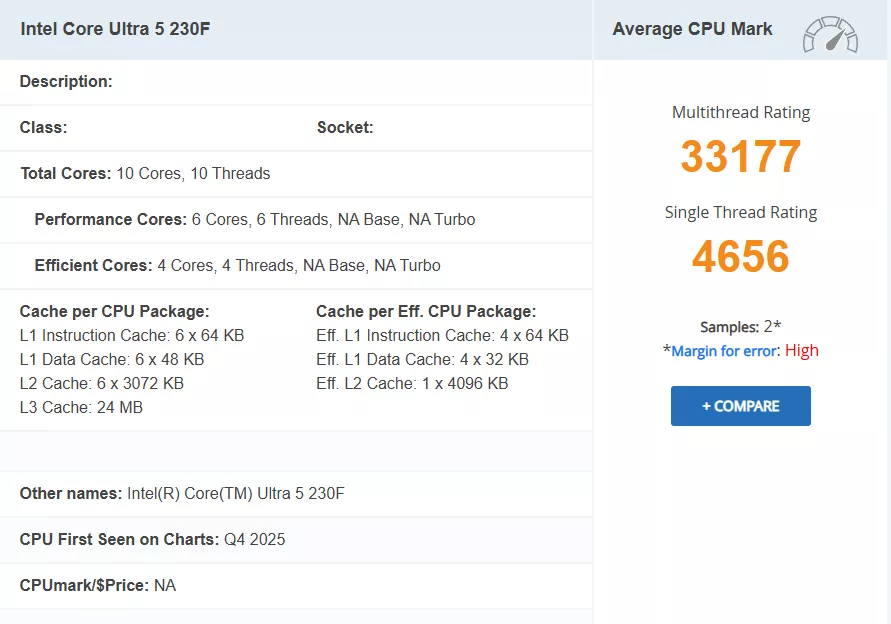Intel has introduced a fresh contender in the desktop processor market with its China-exclusive Core Ultra 5 230F. This new addition boasts enhanced specifications that outperform its predecessors, the Core Ultra 5 225 and 225F, in both synthetic and gaming benchmarks. The Core Ultra 5 230F offers an impressive performance boost, positioning itself as a significant upgrade within the Core Ultra lineup.
Intel’s Core Ultra 5 230F: Performance and Benchmark Insights
In an exciting development earlier this year, Intel launched the Core Ultra 5 230F processor exclusively for the Chinese market. This CPU maintains the same 10-core and 10-thread configuration as its 225/225F counterparts, featuring 6 P-cores and 4 E-cores. Despite this similarity, the 230F has emerged as a superior performer in benchmarks conducted on the PassMark platform, marking its first appearance there. 
This processor not only delivers higher P-Core and E-Core clocks but also comes equipped with a 4 MB higher L3 cache, translating to a 5-6% increase in both single and multi-core scores compared to the 225 and 225F models. With a single-core score of 4,656 and a multi-core score of 33,177, the 230F demonstrates a significant performance enhancement over its siblings.
Comparative Analysis and Future Prospects
The enhanced performance of the Core Ultra 5 230F can be attributed to its improved clock speeds and larger cache. Although the thermal design power (TDP) remains consistent with the 225/225F models, ranging between 65W and 121W, this processor is already proving to be an excellent value for budget-conscious gamers and users. It competes well with the Core Ultra 5 245K, despite having fewer cores and lower clocks. 
As anticipation builds for the next-generation CPUs from Intel, the Arrow Lake Refresh series is expected to push the boundaries even further. Upcoming releases like the Core Ultra 9 290K Plus, Core Ultra 7 270K Plus, and Core Ultra 5 250K Plus promise enhanced specifications and improved memory support, offering even higher clock speeds and more cores. Although official details remain undisclosed, these new processors are poised to deliver superior productivity and gaming experiences compared to the current lineup.
